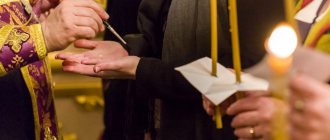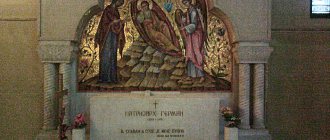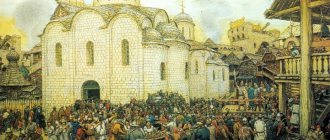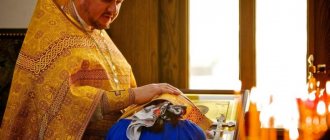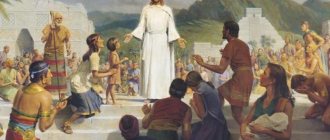PAUL III
Pope Paul III. Portrait by Titian. 1545-46. National Museum of Capodimonte. Naples (Italy).
PAUL III (Paulus), Alessandro Farnese [29.2.1468, Canino, Latium (now Viterbo province), Italy – 11.10.1549, Rome; buried in St. Peter's Cathedral], Pope (from 10/13/1534).
From the aristocratic Italian families. He studied in Rome with the famous humanist Julius Pomponius Lethe. For some time he was at the court of L. Medici in Florence, where he attended the circle of the M. Ficino Academy and made important acquaintances, including with Giovanni Medici, the future Pope Leo X. Alessandro Farnese’s church career was also facilitated by the connection of his sister Giulia Farnese (1474 –1524) with Pope Alexander VI. In 1491 A. Farnese received the post of apostolic protonotary, in September. 1493 - rank of cardinal deacon, his ordination to the priesthood took place only in 1519. He was an administrator in the bishoprics of Corneto, Montefiascone and Parma. In 1524 he was appointed Bishop of Ostia and appointed Dean of the College of Cardinals.
At the time of his election to the papal throne, P. III had four adult children. He took care of the material support of his many. relatives, made three of his grandchildren cardinals (two of them were minors), and appointed his son “Gonfaloniere of the Church” (see Gonfaloniere). Before his death he repented of nepotism.
P. III pursued a policy of consistent struggle against Protestantism and began reforms within the Roman Catholic Church. churches. He made a break with England, publishing in con. 1537 bull excommunicating King Henry VIII. Promoted humanistically educated supporters of church reforms to the cardinalate: Gasparo Contarini, Marcello Cervini (later Pope Marcellus II), Reginaldo Polo, Jacopo Sadoleto. Created with their participation in 1534 special. The commission prepared in 1536 the document “Council for the Correction of the Church” (“Consilium de emendanda ecclesia”), presented to the pope in 1537 (later included in the “Index of Prohibited Books”). On September 27, 1540, with the bull “Regimini militantis Ecclesiae” P. III approved the Society of Jesus (see Jesuits), in 1542 with the bull “Licet ab initio” - “The Holy Congregation of the Roman Inquisition” (see Inquisition).
In 1536 P. III decided to convene an all-Catholic meeting. Council, which was supposed to condemn the Reformation and help strengthen the authority of the Roman Catholic Church. churches. The start of the cathedral was delayed for a long time due to disputes over its location. 12/13/1545 cathedral, known as. The Council of Trent began work in Italy. Trento (lat. Tridentum), located on the territory of Holy Rome. empires. But in 1547 P. III moved its meetings to Bologna, which was part of his possessions. 13.9.1549 due to protests by the emperor. Charles V P. III was forced to interrupt the cathedral sessions (resumed under Pope Julius III in May 1551).
P. III had outstanding diplomacy. abilities. Skillfully balanced between French. King Francis I and Emperor Charles V, whose conflict allowed him to pursue an independent policy. P. III entered into an alliance with Venice and Charles V against the Turks. In 1537 he issued a bull condemning the enslavement of Amer. Indians
P. III became famous as a connoisseur of art, philanthropist, and patron of sciences. Michelangelo appointed ch. architect and painter of the Vatican Palace. Under P. III, the master completed the fresco “The Last Judgment” in the Sistine Chapel, designed the square. Capitol, from 1546 he led the construction of St. Peter's Cathedral, took part in the creation of the Palazzo Farnese. Titian created several. portraits of P. III and his relatives. P. III began collecting the Farnese collection, which included works by the most famous artists of his time and antique statues. N. Copernicus dedicated his chapter to P. III. work “On the revolutions of the celestial spheres.”
Date and causes of death
St. Petersburg, Mikhailovsky Castle. Tuesday, March 12 (24th old style), 1801, at 00:30-00:45, the conspirators entered the emperor's bedroom. The bed was empty. “The bird flew away,” Platon Zubov said in bewilderment in French. The unperturbed Leonty Bennigsen felt the royal bed and said: “The nest is warm - the bird is not far.” Not even a minute had passed before the fugitive was found behind the fireplace screen, trying to hide from the visitors.
Twelve stern officers stood before the frightened emperor. They put forward a demand - to write a manifesto about abdication of the throne. Pavel recognizes one of the conspirators as Platon Zubov and an abusive exchange begins between them. In emotions, the sovereign strikes Zubov in the face. In response, he receives a strong blow to the temple with a heavy gold snuffbox. Many people mistakenly assume that this is the object with which Paul 1 was killed - this is not so.
Pavel fell and 10 people attacked him. They beat me with their hands and feet. They jumped on their stomachs. Finally, the officer of the Izmailovsky regiment Skaryatin wraps a scarf around the monarch’s neck and strangles him. After a couple of minutes it's all over. After the murder, at 2:30 am, physician Jacob Willie was called. He was tasked with putting the body in order. Using all medical skills, it was not possible to hide the hematomas on the monarch’s face. The corpse clearly indicated that a violent death had occurred.
Fig.1 Murder of Paul 1
On March 13 (25), Alexander I issued a manifesto in which he declared the sudden death of the 47-year-old emperor from apoplexy (stroke).
His eldest son Alexander indirectly participated in the conspiracy against his father. It was he who got the throne after the coup.
Life before the coronation
Peter 3, his short biography speaks of this, did not have a marital relationship with his wife. But later, after 1750, he underwent surgery. As a result, they had a son, who in the future became Emperor Paul I. Elizaveta Petrovna was personally involved in raising her grandson, immediately taking him away from his parents.
Peter was pleased with this state of affairs and increasingly moved away from his wife. He was interested in other women and even had a favorite, Elizaveta Vorontsova. In turn, Catherine, in order to avoid loneliness, had a relationship with the Polish ambassador - Stanislav August Poniatowski. The couples were on friendly terms with each other.
Birth of a daughter
In 1757, Catherine’s daughter is born, and she is given the name Anna Petrovna. Peter 3, whose short biography proves this fact, officially recognized his daughter. But historians, of course, have doubts about his paternity. In 1759, at the age of two, the child fell ill and died of smallpox. Peter had no other children.
In 1958, Pyotr Fedorovich had a garrison of soldiers numbering up to one and a half thousand under his command. And all his free time he devoted himself to his favorite pastime: training soldiers. The reign of Peter 3 has not yet begun, but he has already aroused the hostility of the nobility and people. The reason for everything was undisguised sympathy for the King of Prussia, Frederick II. His regret that he became the heir of the Russian Tsar, and not the Swedish king, his reluctance to accept Russian culture, his poor Russian language - all together turned the masses against Peter.
Domestic and foreign policy
In December 1761, Pyotr Fedorovich ascended the Russian throne.
The sovereign's domestic policy usually has an extremely negative assessment. However, it was his activities that served as the basis for the reforms of his successor.
Here is a list of important transformations that few people know about:
- Beginning of the process of confiscation of church lands;
- Creation of the State Bank and issue of banknotes;
- Prohibition of persecution of Old Believers (for the first time in 100 years);
- Proclamation of freedom of religion (long before the French Revolution);
- Manifesto on the freedom of the nobility - the policy of enslaving the peasants and expanding the rights of the nobles was strengthened;
- Declaration of the forest as a national treasure of Russia
And this is not a complete list. On the other hand, a course was outlined towards the introduction of Prussian orders in the army and church, which did not suit the elite of the empire.
In foreign policy, the emperor, unfortunately, was guided exclusively by personal interests and passions. Being a fan of Prussia, he annulled the results of the Seven Years' War, which was actually won by Russia. Thus, Russia lost influence in East Prussia, the central German lands, and the southern Baltic. However, cooperation with Prussia in the future played into our hands during the division of the Polish-Lithuanian Commonwealth under Catherine II. In addition to signing peace with Prussia, the sovereign was preparing for war with Denmark. But I didn’t have time.
In June 1762, a coup took place in St. Petersburg. Catherine became empress with the support of the guard and the noble elite. What caused this? First of all, Peter’s radical policy, which hit national pride, the introduction of Prussian orders, and most importantly, the lack of social support and support among the aristocracy.
Royal roots
The desire of Elizabeth Petrovna, who has reigned on the Russian throne since 1741, to strengthen the throne in the line of Peter the Great, led to her declaring her nephew as heir. She did not have her own children, but her older sister had a son who lived in the house of Adolf Frederick, the future king of Sweden.
Karl Peter, Elizabeth's nephew, was the son of Peter I's eldest daughter, Anna Petrovna. Immediately after giving birth, she fell ill and died soon after. When Karl Peter was 11 years old, he lost his father. Having lost his parents, Peter 3, whose brief biography speaks of this, began to live with his paternal uncle, Adolf Frederick. He did not receive proper upbringing and education, since the main method of educators was the “whip”.
He had to stand in the corner for a long time, sometimes on peas, and the boy’s knees swelled from this. All this left an imprint on his health: Karl Peter was a nervous child and was often sick. By character, Emperor Peter 3 grew up to be a simple-minded man, not evil, and was very fond of military affairs. But at the same time, historians note: when he was a teenager, he loved to drink wine.
Where is he buried?
A week after the murder, on March 20, Wednesday of Holy Week, the body of Paul the First was transferred from the throne room of the Mikhailovsky Castle to the mourning hall and placed in a coffin on a hearse. On Holy Saturday, March 23, the body of the monarch was transported to the Peter and Paul Cathedral. Troops lined up along the path of the funeral procession with trellises. During the procession, the wife of the murdered sovereign, Maria Fedorovna, fainted several times.
In the cathedral, the coffin with the late monarch was placed on a hearse. The clergy performed the funeral service. All the bells of the city rang. Alexander I and members of the Romanov family touched the hand of the head of the family for the last time. Then, under cannon fire, the body of the deceased was lowered into the tomb, between the church wall of the cathedral on the north side and the left choir. The remains of other representatives of the Romanov dynasty lie nearby.
From March 12 to 23, more than 102 thousand people said goodbye to the emperor. This is almost half the population of St. Petersburg at that time. The abrasions on the face of the deceased left those present in bewilderment. However, there were practically no truly mourners. One got the impression that those gathered were waiting for this day. People were joking in line and laughter could be heard.
short biography
Pavel 1 was born on October 1, 1754, in the Mikhailovsky Castle in St. Petersburg. This is the second child of Catherine II in her marriage to Peter III. However, rumors tell about Catherine’s famous favorite, Sergei Saltykov, who performed Peter’s marital duties for almost 10 years and could be the biological father of the heir to the throne. This version is refuted by the external similarity of Peter and Paul. The heir spent almost his entire childhood and youth in the care of his great-aunt, Empress Elizabeth I.
We can say that the boy became a hostage in the palace wars for the throne of the heir. The child was raised among nannies, army soldiers and teachers. Elizabeth appointed dignitary N.I. Panin to be responsible for the development of the heir. The child mastered several languages, played musical instruments, and was strong in science and military affairs.
The first spring of the 19th century was sprinkled with the brutal murder of the ruler of the Russian Empire, Paul I. The autocrat went down in history as a tough reformer. Along with censorship, the ruler introduced restrictions on the import of foreign literature and carried out unpopular military reforms. The death of Paul I was beneficial to many, because he managed to turn absolutely all representatives of the elite against himself. What the sovereign became famous for over the years of his reign, when and by whom he was killed, we will tell further.
Peter 3 Fedorovich - marriage
In 1745, the marriage of Pyotr Fedorovich took place. His wife was Princess Ekaterina Alekseevna. She also received her name after accepting Orthodoxy: her maiden name was Sophia Frederica Augusta of Anhalt-Zerbst. This was the future Empress Catherine II.
A wedding gift from Elizaveta Petrovna was Oranienbaum, near St. Petersburg, and Lyubertsy, Moscow Region. But the marital relationship between the newlyweds does not work out. Although in all important economic and business matters, Pyotr Fedorovich always consulted with his wife and felt trust in her.
